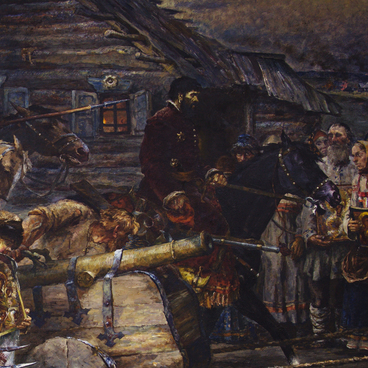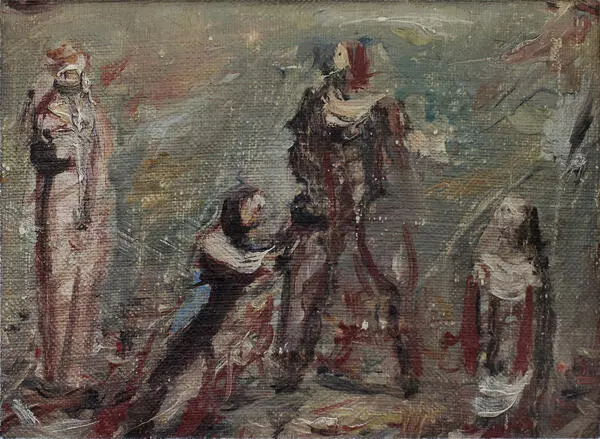Artist Solomon Nikritin worked on the painting Foundryman in the 1950s — 1960s. It was the time of the Khrushchev Thaw in the USSR. Two main movements dominated in painting: the second wave of the Soviet avant-garde and the austere style that grew out of Socialist realism of the Stalin era. Solomon Nikritin belonged to avant-garde painters.
Foundryman
Время создания
1950-1960s
Размер
160x120 cm
Техника
oil on canvas
Коллекция
3
Открыть в приложении#1
Solomon Nikritin
Foundryman
#2
#15
In this picture, Nikritin portrayed a steel mill worker. The character is wearing a protective suit and is holding a ladle with molten metal in his hands. The artist did not paint fine small details on the canvas; the figure of the foundryman looks expressly monumental.
#19
The colouration of the work is hinged on warm colours: many shades of yellow, red, brown. The steelworker’s face and hands are lit by the reflections from the smelter. The metal in the ladle is almost fiery: steel acquires such a colour if it is heated to a temperature of more than 1000 degrees.
#7
Canvases by Solomon Nikritin belong to a variety of artistic movements. He studied at the Moscow private studio of Leonid Pasternak and in the Petrograd workshop of painter Alexander Yakovlev. In 1917, in Kiev, he entered the studio school of the avant-garde and theatre artist Alexandra Exter. Then, on the recommendation of People’s Commissar of Education Anatoly Lunacharsky, the young painter was admitted to Moscow VKhUTEMAS, to the class of famous abstract artist Wassily Kandinsky.
#18
By 1922, Nikritin created his own artistic movement — Projectionism. He paid special attention to painting materials, to the texture and colouration of his pictures. The artist founded the Method association, which included VKhUTEMAS students: Sergey Luchishkin, Kliment Redko, Alexander Tyshler, Mikhail Plaksin and others.
#16
‘An artist is not a producer of finished objects of consumption (cupboard, picture), but a creator (exponent) of individual projections (method)’.
The underlying concept of Projectionism. From the manifesto of the art group Method.
#12
By the mid-1930s, the artist abandoned the ideas of Projectionism and did not participate in exhibitions. During the war, he worked in a visual propaganda workshop. Together with his wife Dora Kazhdan, the artist created propaganda posters for TASS Windows.
#17
In the 1950s, Nikritin returned to avant-garde art. At the same time, one of the most famous collectors of the Russian avant-garde, George Costakis, became interested in his art. He acquired several works from the artist for his collection. Some of those paintings are now on display at the State Tretyakov Gallery.
#20
Belgorod State Art Museum
читать дальшескрыть
00:00
00:00
1x
Foundryman
Время создания
1950-1960s
Размер
160x120 cm
Техника
oil on canvas
Коллекция
3
Открыть в приложении
Поделиться


